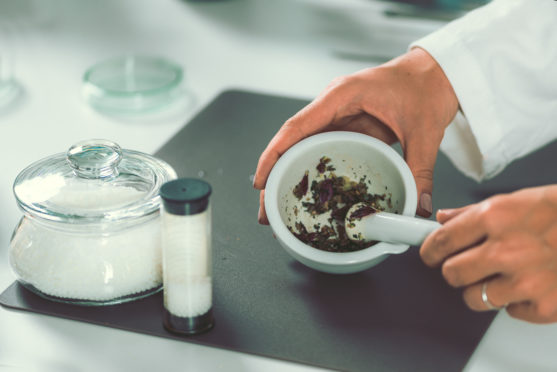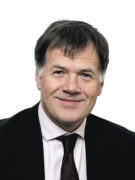As a young child I remember being taken to see a kindly, grey-haired doctor called Dr McGowan to be treated for asthma.
Dr McGowan was calm and friendly, but what really intrigued me was his glorious collection of rainbow-coloured paperweights which he displayed on his leather-topped desk.
They were irresistible to my inquisitive fingers and rather than the expected “don’t touch that” when I reached for them, I was encouraged to pick up and examine each one.
I was plagued by childhood chest problems from pneumonia to croup, but it is my memories of asthma that still haunt me.
With each viral illness, or without warning, my chest would tighten and, terrified, I would know I was in for problems. At that time my treatment options were limited and Dr McGowan had been recommended by one of my mother’s close friends.
But Dr McGowan was not my GP. He was a medically qualified homeopath and his treatments came in the form of fine powders in folded white paper slips. The papers were carefully unfolded and the contents tipped under my tongue. There was nothing unpleasant, just a slightly sweet but bland flavour that I can vividly remember to this day.
My “real” GP was Dr Fleming, son of the hero of penicillin, Alexander Fleming. He was of a very different mould. Many of his patients found him brusque but he was much loved by my parents.
His practice was of the old style, the waiting room a front room of a house, his consulting room like something out of Dr Findlay. He knew the power of his father’s invention and was a cautious prescriber, expecting his parents to show the same respect.
Woe betide you if he found out you had not completed the course of antibiotics as prescribed!
I was not able to be treated with the inhalers we use now as they only became widely used in the mid-1970s after my symptoms had resolved.
Instead, Dr McGowan’s powders were used in the hope of settling down my chest, but Dr Fleming was still regularly called out and he willingly visited to treat my asthma, once even on Christmas day.
I was lucky enough to grow out of my asthma entirely at around the age of seven, but I am still haunted by bad childhood memories, when bad attacks left me struggling for the next breath. Was it Dr Fleming’s cautious use of conventional medicine or Dr McGowan’s homeopathy that fixed me? A combination of the two? Or did I just grow out of it?
Roll on to the present day and those new-fangled inhalers have become ever more sophisticated and effective. In my practice, specially trained nurses assess our patients, adjusting doses and teaching the right usage and dosage in a way that would have been unheard of back when I was a sufferer.
And what of homeopathy? I am often asked by my patients what I think of it. It was relied on by my parents, but I now have no confidence in the evidence for its effectiveness.
Since my childhood experiences I have spent five years at university learning about our body’s anatomy, biochemistry and physiology. I was taught how things go wrong and what we can do to fix them.
This was followed by 30 years as a doctor, during which time that knowledge has been updated and refined, based on new evidence. I am aware that there is less evidence than I would like for some of the treatments, but offering it is based on it being congruent with medical knowledge and experience.
Homeopathy fits with none of this. It was never part of my medical training and the NHS has turned away from offering it. Homeopathy relies on an entirely different and conflicting theory that stretches credulity – asking us to believe that water has a memory that allows compounds to be active at infinitesimally small concentrations.
But could it have worked for me and does it indeed have a role for my patients? I have absolutely no idea. The saving grace is that it is unlikely to do harm, and Dr McGowan’s medical training ensured that any serious condition needing urgent care would not be ignored.
In fact, my time with him and his wonderful paperweights and the ritual of the treatment could well have been a placebo in the absence of a better solution, allowing time and space for my body’s own healing process.
While the issue of alternative medicine leaves me deeply uncomfortable, I realise that doctors McGowan and Fleming have had a lasting effect on me as I was learning my trade and beyond.
I have striven to keep up with modern theoretical medicine and to use it with care, as demonstrated by Dr Fleming.
His cautious use of antibiotics, and no-nonsense approach, is as relevant now as it was then.
Equally, I would love to be able to model Dr McGowan’s calm and wise demeanour and his ability to relate to me as a small child.
Dr Miles Mack is a GP in the Highlands and the former chairman of the Royal College of General Practitioners Scotland











